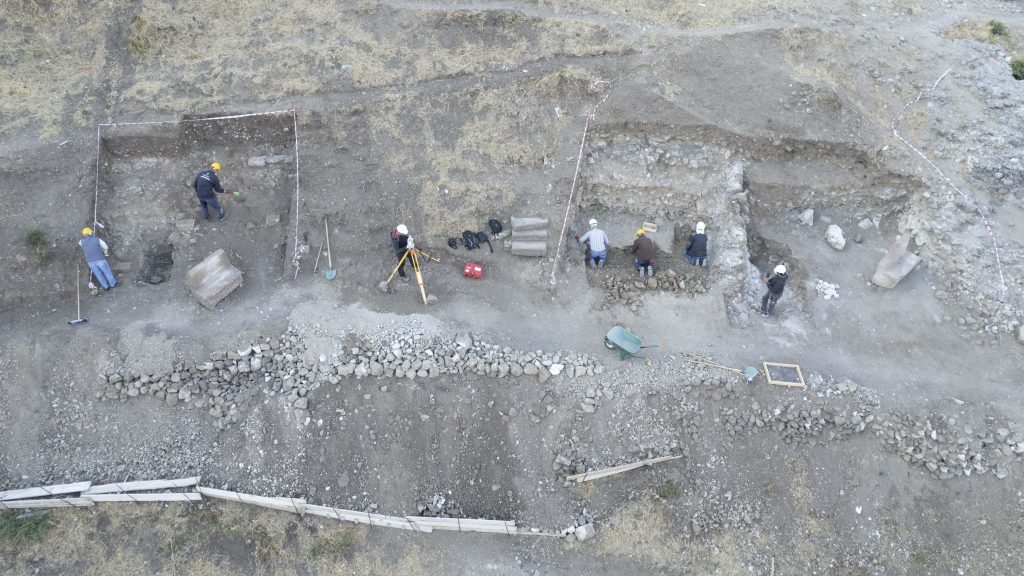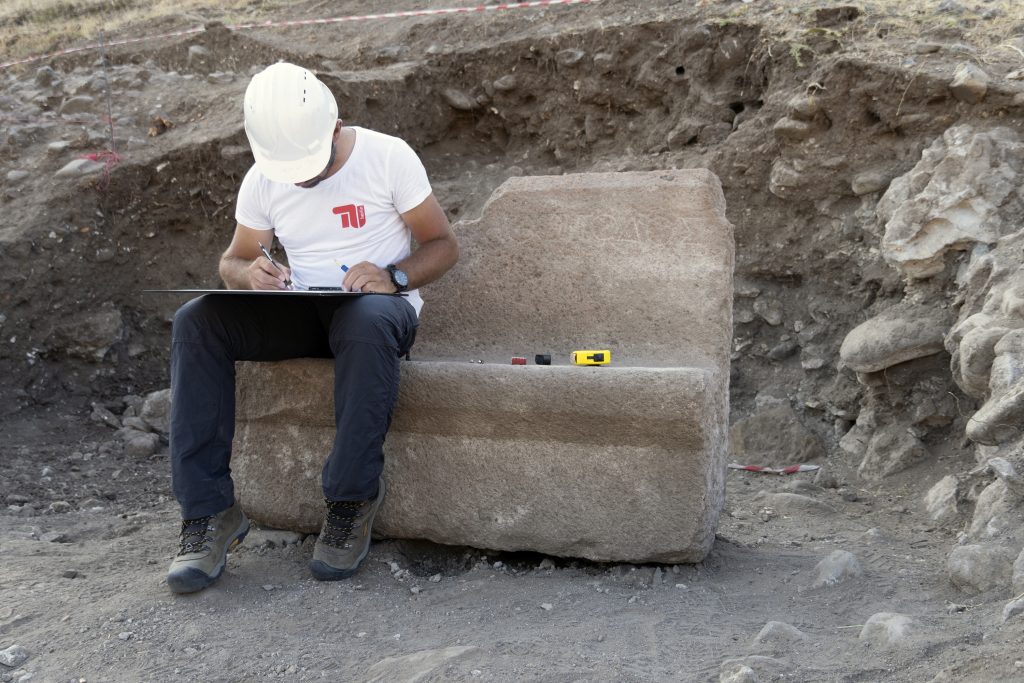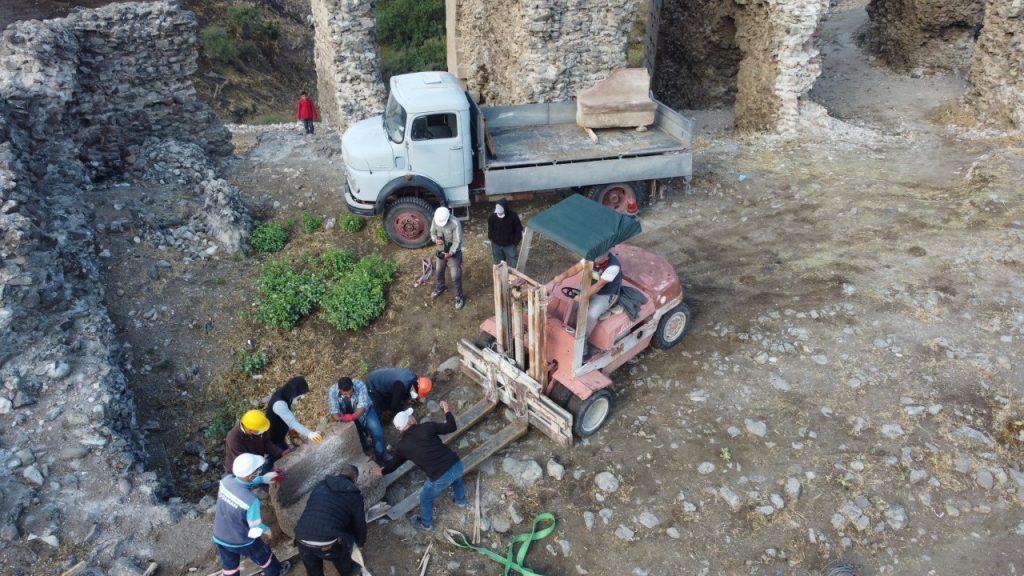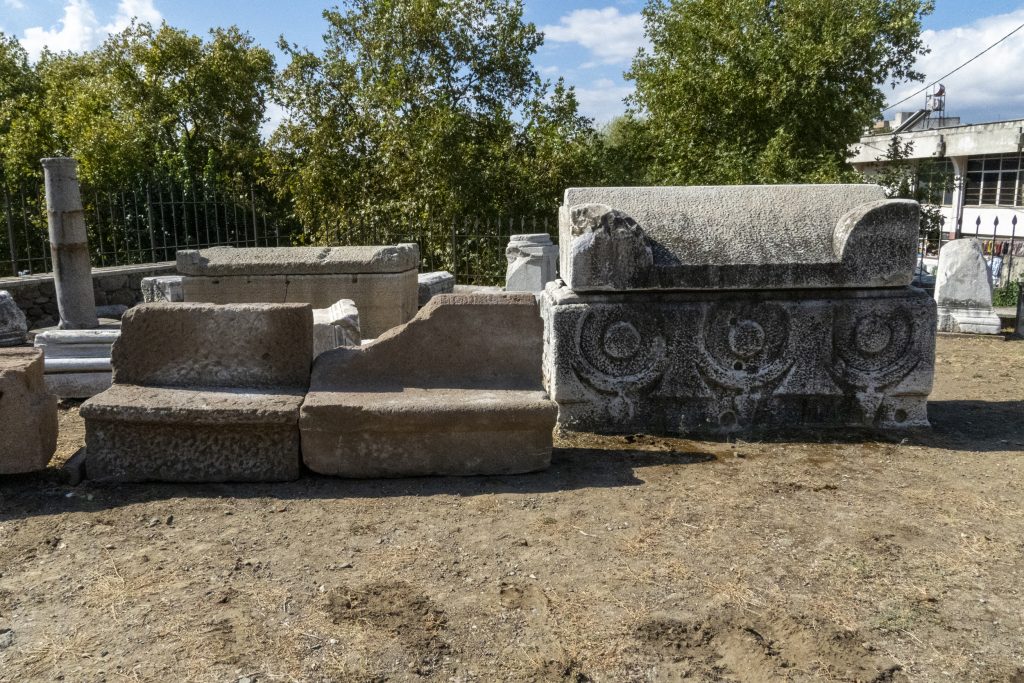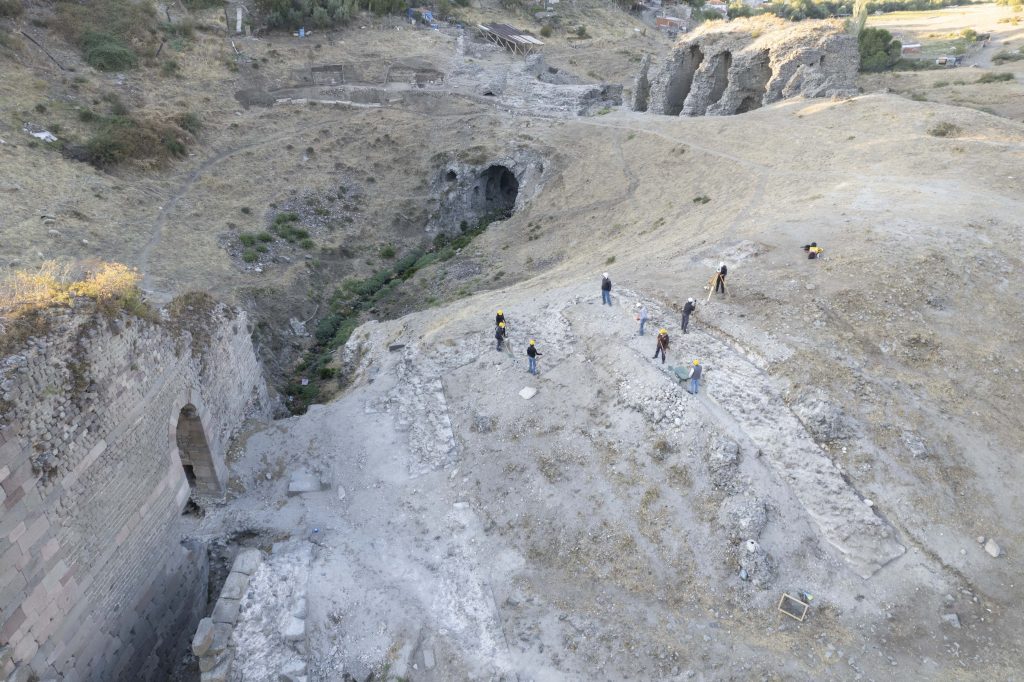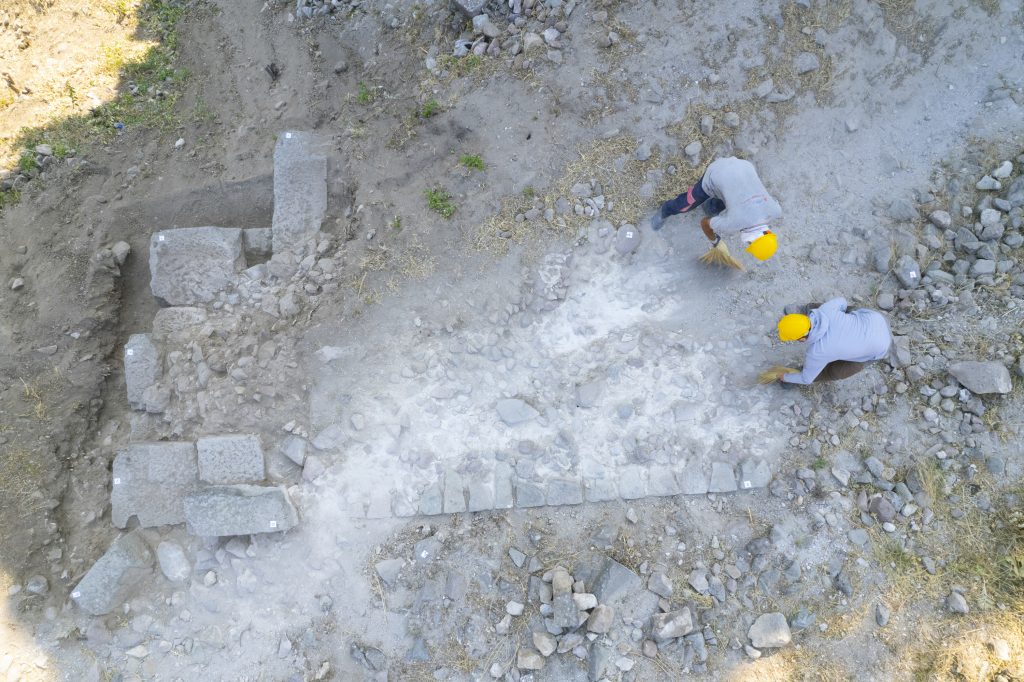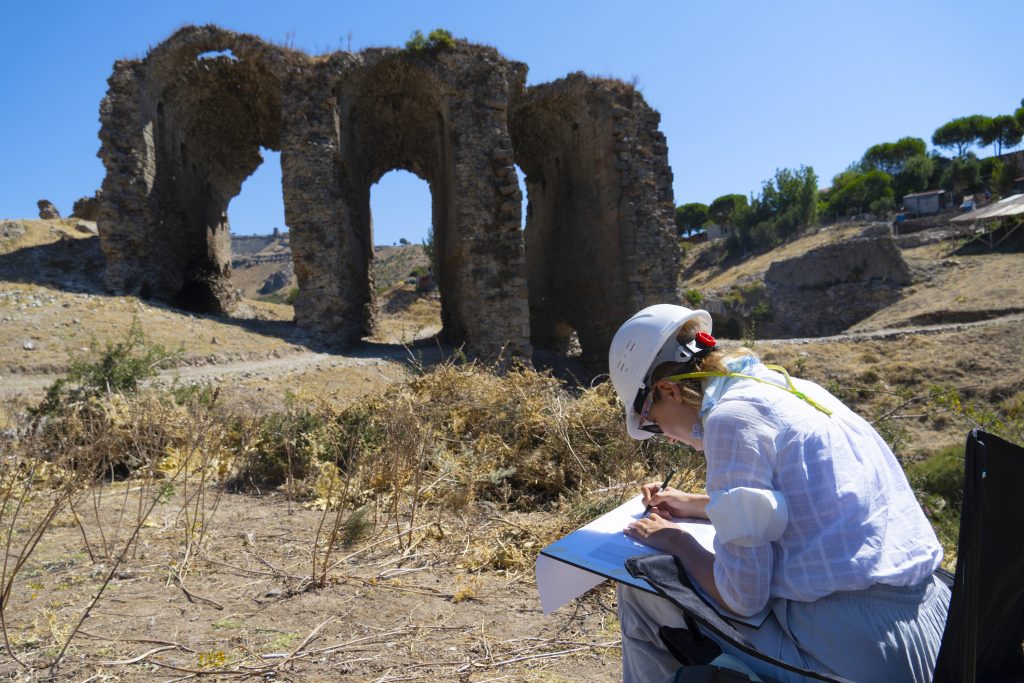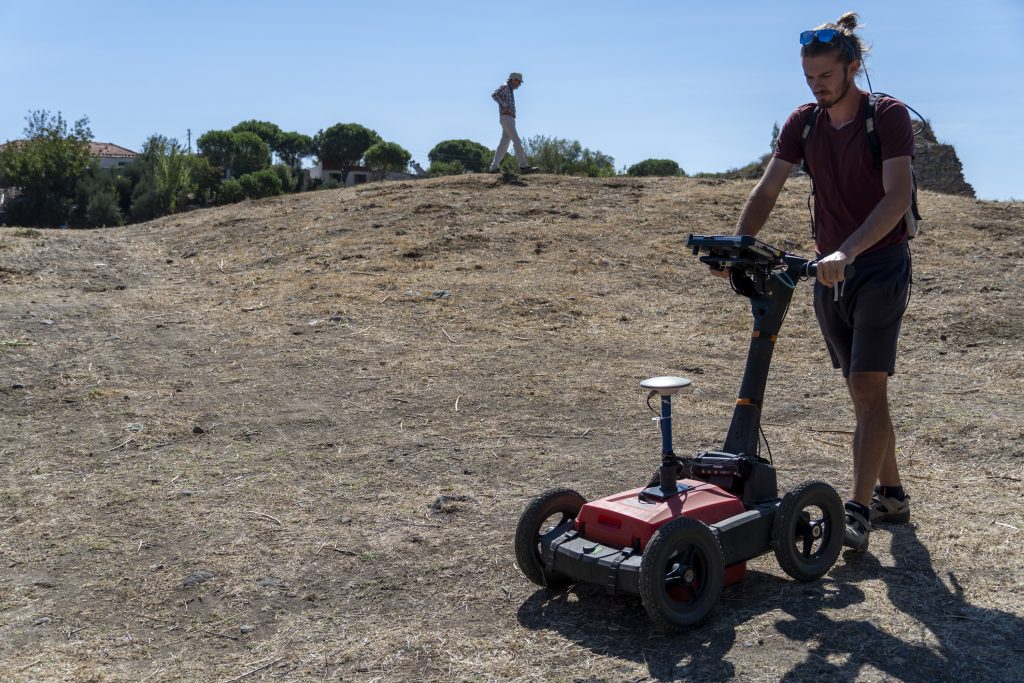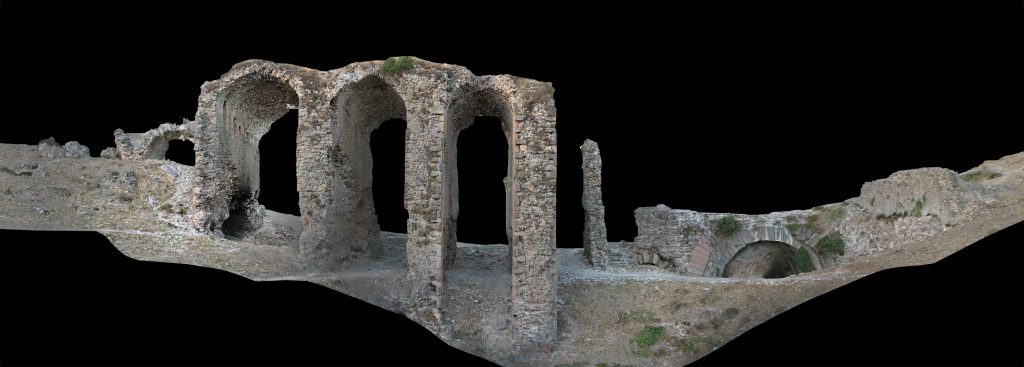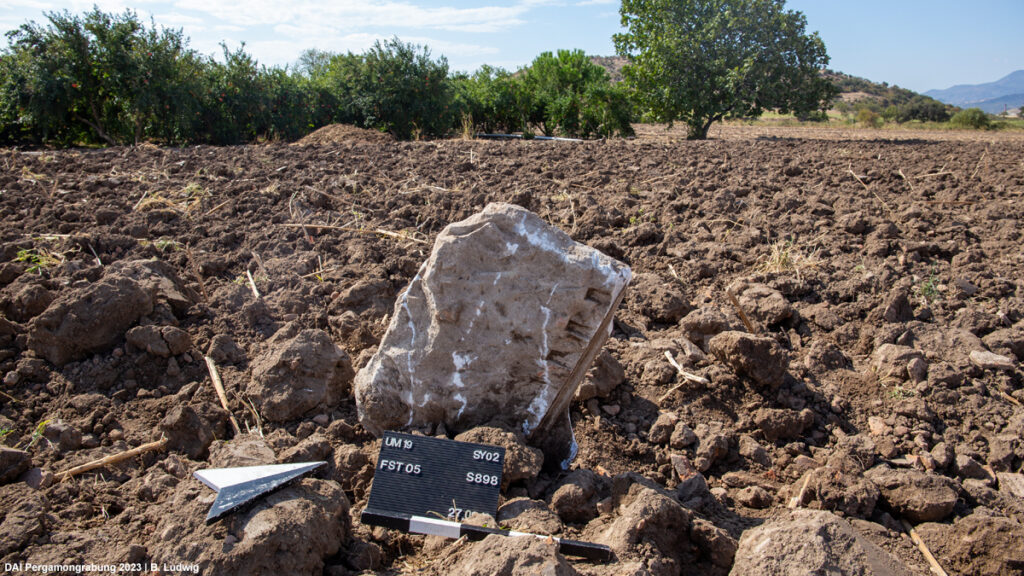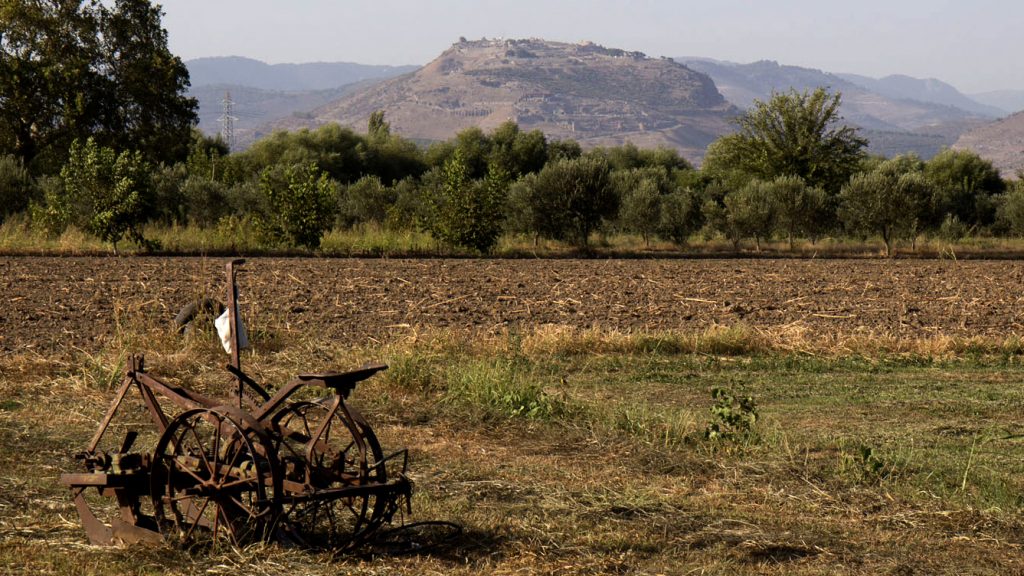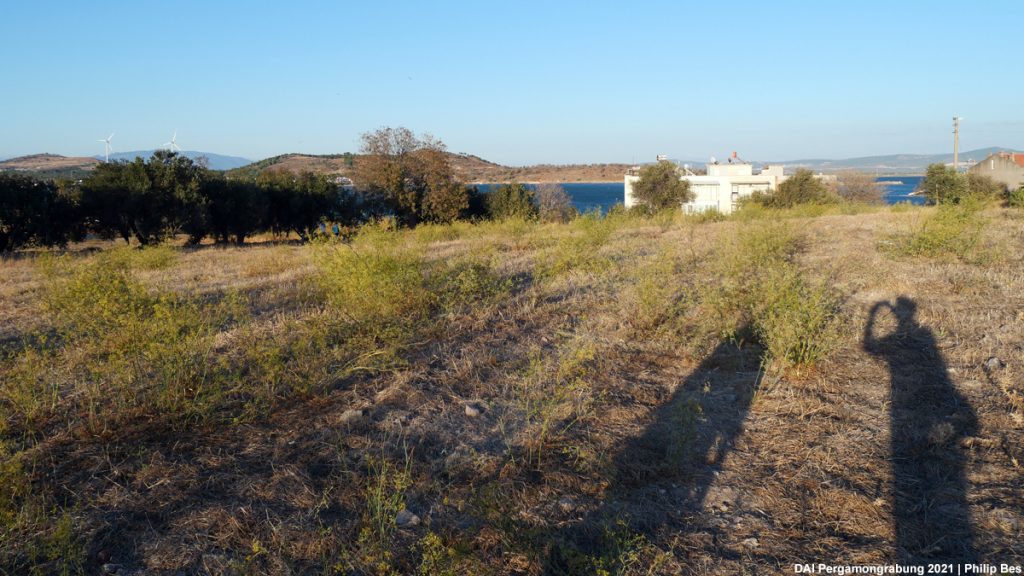The third year of the detailed architectural documentation and the second phase of the archaeological excavations at the amphitheatre of Pergamon have started as part of the 2021 campaign in Pergamon. Before the archaeological and architectural research has started, a two-week cleaning work at the amphitheatre was carried out (Fig. 1 a-b). No archaeological excavations could be carried out last year due to the pandemic, but building research and architectural documentation could be continued by a smaller team. This year, excavations resumed in several parts of the amphitheatre with the aim of providing important information about the architectural layout, the chronology and the use of the amphitheatre (Fig. 2).
Fig. 2 Trenches at the cavea of the amphitheatre (DAI Pergamongrabung 2021 | I. Yeneroğlu)
The trenches on the east side, aim to give more information about the cavea, its structure and the integration of the slope into the building. As a first result it has been confirmed that the cavea was constructed with cheaper material and in a faster way compared to the substructions. Additionally, two seat blocks with inscriptions (not in situ) from the cavea were unearthed in the two trenches (Fig. 3 a-b). This discovery indicates that inscribed seat blocks for privileged individuals could be found not just in the ima cavea but also on upper levels. After detailed documentation and 3D photogrammetry on the field, the blocks were transferred to the exhibition courtyard of the Red Basilica in Bergama (Fig. 4 a-c).

Fig. 4b Transportation of the inscribed seat blocks (DAI Pergamongrabung 2021 | I. Yeneroğlu)
Fig. 4c Inscribed seat blocks at the courtyard of the Red Basilica (DAI Pergamongrabung 2021 | I. Yeneroğlu)
The cleaning activities on the north and south side of the amphitheatre brought new walls to light which will help to identify the outline and limits of the building. (Fig. 5 a-b). A better 3D reconstruction will also be possible. A significant outcome of the studies so far is the possibility to determine the steps of the building process. Based on the preserved remains of the amphitheatre six construction stages could be identified.
As in previous years, the Structure from Motion (SfM) method is used for the advanced measurement and 3D documentation during the architectural research and documentation (Fig. 6). As part of SfM documentation, new and improved drones with developed cameras are used for photogrammetry. The architectural documentation includes new measurements for the ground plan and new section drawings based on 3D-models (SfM method) combined with GNSS and Total Station measurements (Fig. 7).
Besides work mentioned above, geophysics research teams from Kiel University (Germany) and Kocaeli University (Turkey) applied ground penetrating radar (GPR) method on the west side of the building to detect possible constructions (Fig. 8).
Fig. 7 Orthomosaic from SfM 3D Model (DAI Pergamongrabung 2021 | I. Yeneroğlu)
Fig. 8 GPR method at the amphitheatre (DAI Pergamongrabung 2021 | I. Yeneroğlu)
Aerial video of the amphitheatre during excavation and cleaning activities (DAI Pergamongrabung 2021 | I. Yeneroğlu)
News coverage of the work at the amphitheatre
Hürriyet Daily News | 24 September 2021 | Exclusive lodges found in Turkey’s ‘Colosseum’
Anadolu Ajansı | 22 September 2021 | ‘Türkiye’nin kolezyumu’nda seçkinlere özel 1800 yıllık localar bulundu
Milliyet | 22 September 2021 | ‘Türkiye’nin kolezyumu’nda seçkinlere özel 1800 yıllık localar bulundu
TRT Haber | 22 September 2021 | “Türkiye’nin kolezyumu”nda 1800 yıllık özel localar bulundu
NTV | 22 September 2021 | ‘Türkiye’nin kolezyumu’nda seçkinlere özel 1800 yıllık localar bulundu
Haber Ekspres | 22 September 2021 | Bergama Antik Kenti’nde 1800 yıllık localar bulundu
Star | 22 September 2021 | ”Türkiye’nin kolezyumu”nda seçkinlere özel 1800 yıllık localar bulundu
KopalniaWiedzy.pl | 27 September 2021 | Strefy VIP w starożytnym amfiteatrze w Pergamonie
Onet | 27 September 2021 | Strefy VIP w starożytnym amfiteatrze w Pergamonie


